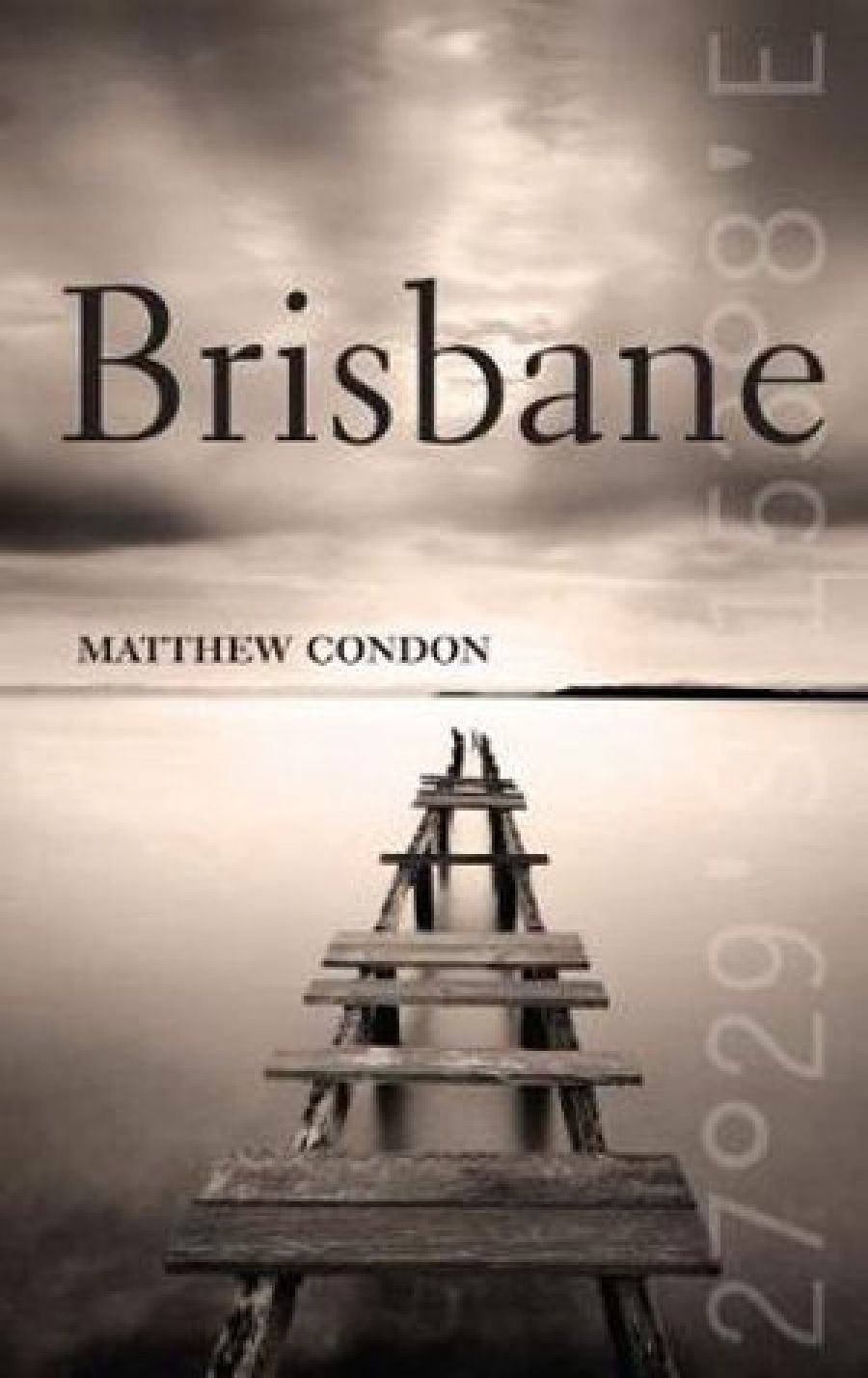
- Free Article: No
- Contents Category: Cultural Studies
- Review Article: Yes
- Online Only: No
- Custom Highlight Text:
Novelist Gilbert Parker’s appraisal of Brisbane, penned during his visit in 1889 and quoted by Matthew Condon in this new, impressionistic history of the city, is not one that Condon wants to repeat, yet is powerless to refute: ‘Brisbane is not the least poetical … There is a sense of disappointment, which grows deeper as the sojourn in the capital is continued.’
- Book 1 Title: Brisbane
- Book 1 Biblio: New South, $29.95 hb, 312 pp, 9781742230283
- Book 1 Readings Link: https://www.booktopia.com.au/brisbane-matthew-condon/book/9781742230283.html
Condon’s stated intention is to ‘get back to the Brisbane [he] used to know … to try to find the index to a city’ and to rediscover his childhood and family after decades living abroad. At first he is shocked by the apathetic mindset, the aversion to contemplation and the lack of interest in history he perceives among Brisbanites. Why is it, Condon wants to know, that no other Australian city ‘produces such consistent bile as Brisbane does’ in its people while exerting such a ‘peculiar hold over its children’? And why do these people carry such ‘chips on their shoulders’, evident in the city’s peripatetic literature and rate of expatriating population?
Esoteric questions invite esoteric answers. Condon uses four distinct point-of-view registers, cutting back and forth between third-person narration of his childhood as ‘the boy’, first-person observations of his present day life and family (‘my boy’), a scholarly third-person history of Brisbane, and italicised first-person for oblique musings, interviews with writers and other literary bridging material. The method collapses timeframes and emphasises the feeling of disconnection that Condon posits as the true mark of Brisbane’s consciousness. Thoughts and events recur across the registers to mirror Condon’s feeling that his ‘remembered past in Brisbane suddenly shifts and shimmers’. His invocation of the Brisbane River ‘flowing backwards and forwards in the dark’ also provides the impermanent terms – of mind, memory, ambition – in which he wants to describe the city.
Condon’s quotation of local writers also helps to expose his latent message. David Rowbotham, Steele Rudd, David Malouf, Rodney Hall, and Michaela McGuire are all invoked, but it is Thea Astley’s expression of ‘the evanescence of things temporal’, in her short story ‘Coming of Age’, that comes closest to identifying the feeling Condon has in mind. His use of narrative third-person to describe ‘the boy’s’ experience of Brisbane’s verdant natural environment, ‘narcotic’ heat, tropical storms and flash flooding also adds weight to an understanding of the place, and himself in it, as shifting, unsure and unpredictable. Most of all, there is shame in Condon’s voice and a longing to reconcile the idyllic pleasures of youth with his adult worldliness:
We have a space needle owned by a hairdressing entrepreneur, throwing eerie blue laser beams of light across the river each evening. We have street effigies of swagmen boiling billycans, left over from the World Exposition of 1988 … The actual history of the city though is, by and large, a nameless jigsaw, a book without an index.
Brisbane’s historical entries comprise a well-researched, if selective, account of the development of the town – first named ‘Edenglassie’ – from its foundation as a secondary penal settlement to New South Wales’s system in 1824, to Premiers Peter Beattie and Anna Bligh’s $1.7 billion North Bank super development in the 2000s. The mistaken placement, uncorrected to this day, of founder John Oxley’s memorial stone at North Quay is meticulously investigated. After consultation of Oxley’s Field Books, meetings with local historians John Steele and Tom C. Truman, and a field trip with truck-driving history enthusiast David Barr, Condon locates the memorial’s rightful place in the suburb of Milton. The obelisk’s misplacement and dereliction are symbolic of Brisbane’s inessentiality.
One of the joys of Brisbane is its novelistic style. Condon, not sparing with his symbols, is easily distracted by minor characters, coincidences, family ghost stories and all manner of miscellany. Highlights include a description of two nineteenth-century timekeeping devices, the ‘time-ball’ and ‘time-gun’; recollections of the minor artist Andrew Sibley; mention of Dr Pennington Lucas’s two-volume dystopian science fiction novel, The Curse and its Cure (1894); a detailed portrait of Brisbane’s first journalist, Thomas Dowse; and a disturbing account of the police bashing of four hundred anti-Springbok demonstrators in 1971.
Condon does not claim that the mutable, anti-poetic reading of Brisbane presented in this book is definitive. His Brisbane is barely cognisant of itself. Those who live, or have lived, in the ‘big country town’, however, will instantly recognise the ‘irritated, restless gene’ he points to in the city’s history, in its literature and in himself. Condon’s writing in Brisbane is interesting in so far as it displays the same characteristics he perceives in the city – allusiveness, ineffability and implacability. Locals and those less inclined to arch literariness, though, may not believe his disappearing act


Comments powered by CComment